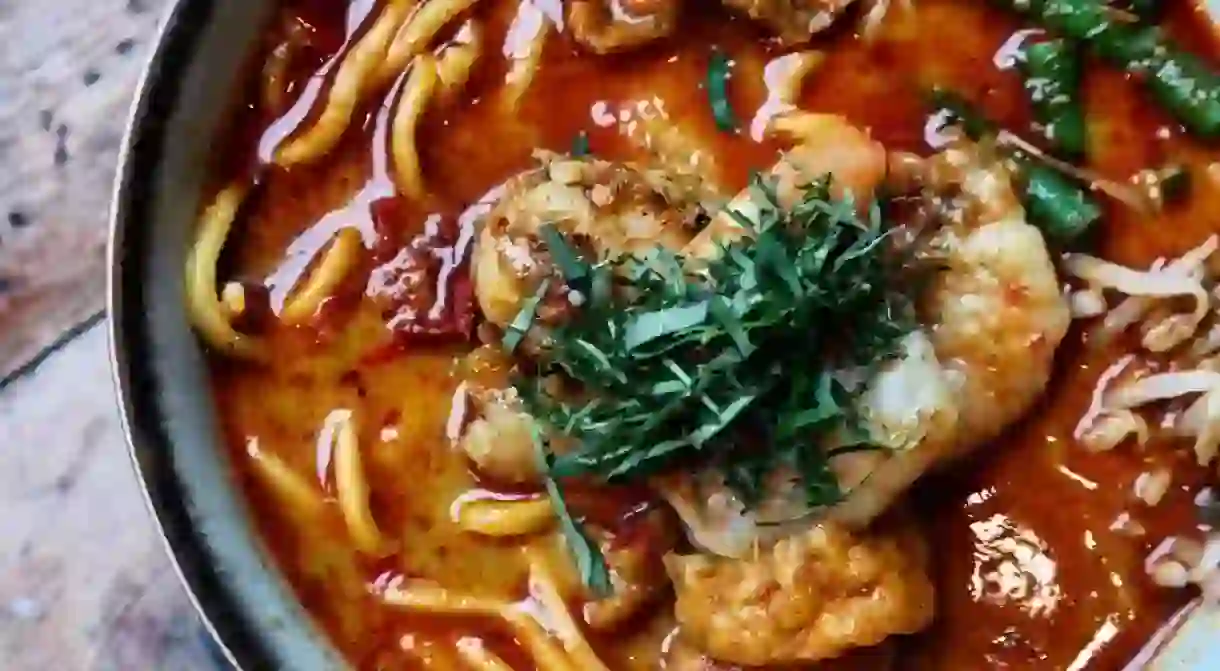6 Things You Didn't Know About Peranakan and Nyonya Cuisine

Peranakan and Nyonya cuisine is extremely popular across Asia, and for good reason. Boasting rich food traditions and unique, mouthwatering flavours, these dishes offer travellers a taste of the region’s celebrated history.
Peranakan and Nyonya food is a unique blend of Chinese, Malay and other Southeast Asian cultures. It originates from Chinese immigrants, who in the 15th century moved to the regions that are now Malaysia and Singapore and Indonesia, blending influences and cooking traditions. Here are 6 fun facts about this delightful cuisine.
The terms ‘Peranakan’ and ‘Nyonya’ food both apply
The word Peranakan translates roughly to ‘locally born and bred’, with the popular idea being that Chinese immigrants married locals; resulting in a unique culture with entirely new traditional beliefs, clothes and cuisine. The Peranakan Chinese in Malaysia use the term ‘Baba Nyonya’ to refer to themselves. This comes from the Indonesian language, where baba and nyonya are respectful and endearing terms for men and women respectively. As the women were primarily responsible for providing meals for the family and community, the result is that this style of cuisine is referred to as ‘Nyonya’.
http://instagram.com/p/BH2CJTUj_dI
No two Peranakan and Nyonya dishes are the same
Peranakan cuisine is a mix of Chinese ingredients and Malaysian/Indonesian spices and cooking methods. Importantly no two dishes are the same, as each creation is an interpretation based on the preferred flavours and ingredients of the chef. Some of the signature ingredients used in Peranakan cooking include coconut milk, laksa leaves, lemongrass and tamarind. There are of course countless others, as Peranakan cuisine is known for being highly flavourful – precisely because so many different ingredients are used in each dish.
http://instagram.com/p/BJtxkZIBJ9_
Peranakan and Nyonya cooking is heavily influenced by region
Peranakan cuisine is heavily influenced by the region where it is prepared. Whether in Penang, Kuala Lumpur or Singapore, a dishes’ flavours cater to local tastes and availability of ingredients. An example of this is one of the most popular Peranakan dishes, laksa. When prepared in Penang, or northern Malaysia, Peranakan food is flavoured by Thai influences, leading to a more sour assam laksa as compared to southern Malaysia and Singapore, where the Indonesian influence results in the coconut milk-heavy laksa lemak.
http://instagram.com/p/BJr6wGFj3tc
Peranakan and Nyonya food takes a long time to prepare
Peranakan cuisine is not fast food, instead requiring a high level of patience and preparation in advance. In order for the meat and seafood to properly absorb the essential spices, they must be marinated for many hours before they can be added to the cooking process. Even the spices require preparation, as fresh spices are ideal for strong flavours. The person cooking the dish will often use a mortar and pestle to grind the lemongrass, wild ginger and turmeric root that give Peranakan food its strong and distinct flavour.
There are a number of famous signature dishes
Peranakan cuisine has a star-studded lineup of signature dishes that travellers often tick off bucket lists. As previously mentioned, the most well-known of these is laksa. Regardless of whether it carries Thai or Indonesian influences, laksa is a soup with thick noodles, vegetables, cockles and prawns (with different seasoning depending on the regional influences). Penang was the first place to develop this dish, earning it the title of ‘hawker food capital’ in Malaysia.
Mee Siam is another popular dish, which are noodles heavily influenced by Thailand. In this dish, thin vermicelli noodles and shrimp are stir-fried in a tamarind sauce and then liberally seasoned with kalamansi limes (small citrus fruits native to Asia) which give this spicy number a fresh finish.
Finally, there is rojak. Rojak is a spicy salad with pineapple, guava, green mango, peanuts and sesame seeds. The dressing is made from a thick prawn paste and Thai chillies to give the dish an extra kick.
Don’t forget about dessert!
Because of the disparate influences on Peranakan culture, there is a huge variety of Nyonya desserts. What you will commonly see are Malaysian ingredients (like sweet potato and yams), combined with coconut milk or glutinous rice. Chinese ingredients like red beans and even mung beans also make frequent appearances in Peranakan desserts.
Two very popular Peranakan desserts are burbur cha-cha, which is a porridge made with sweet potato and sago then flavoured with rock sugar and pandan, as well as cendol, where a bowl is layered with what look like green candies made from green pea flour and then covered in red beans. These two layers are then covered in a mountain of shaved ice and rice, which is then drizzled with coconut milk. Lazat.
http://instagram.com/p/BJseRNLhKww













